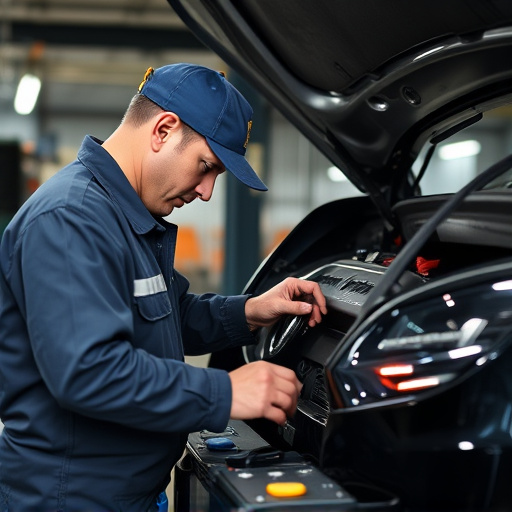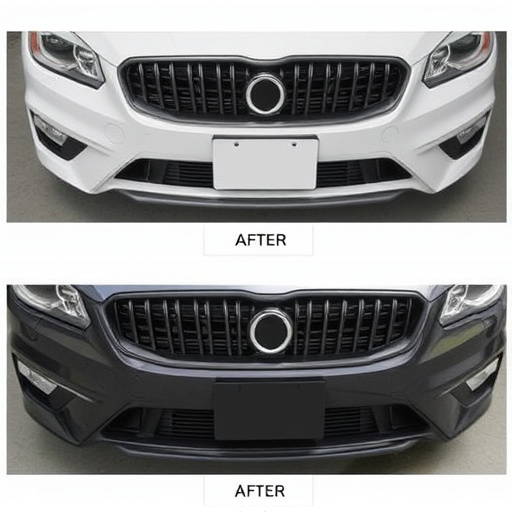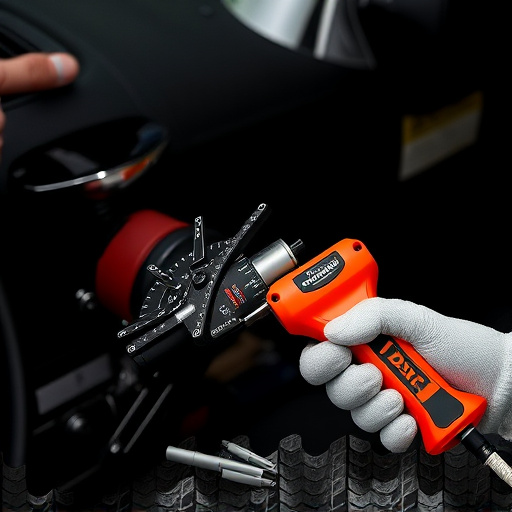The Tesla seatbelt pretensioner reset is a critical safety procedure triggered by collisions or repairs. It requires following OEM guidelines for proper sensor calibration and mechanical integrity. After a collision or car dent repair, perform the reset with a specific tool, pressing the hidden button in the glove compartment for 10 seconds. Post-reset, conduct thorough safety checks on seatbelt mechanisms, pretensioner hardware, and sensors for any damage. Prompt collision damage repair ensures optimal passenger safety by restoring these critical systems to top condition.
Tesla vehicles are renowned for their cutting-edge technology, including the sophisticated seatbelt pretensioner system designed for optimal passenger safety. However, over time, these mechanisms may require resetting to ensure peak performance. This article guides you through the essential steps to perform a Tesla seatbelt pretensioner reset using original equipment manufacturer (OEM) procedures. By following these precise instructions, you can maintain the integrity of your vehicle’s life-saving safety feature.
- Understanding Tesla Seatbelt Pretensioner System
- Step-by-Step Reset Process Using OEM Procedures
- Post-Reset Safety Checks and Considerations
Understanding Tesla Seatbelt Pretensioner System
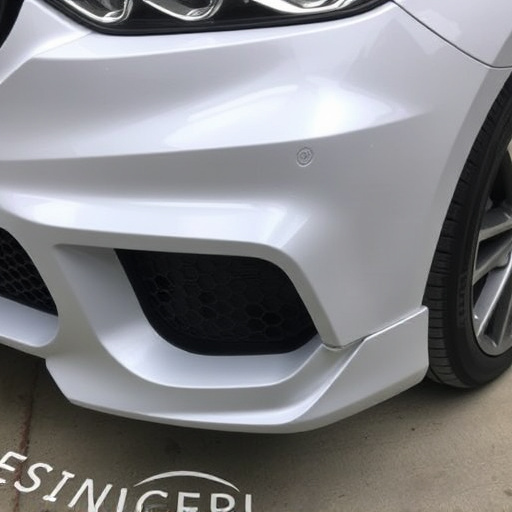
The Tesla seatbelt pretensioner system is a crucial safety feature designed to secure occupants in the event of a collision. It works hand-in-hand with airbags, using powerful springs to tightly restrain the driver and passengers. This system automatically deploys when sensors detect an impact, ensuring faster reaction times and reducing the risk of injuries. The seatbelt pretensioner reset, however, is not a simple process that can be done at will; it must adhere to OEM (Original Equipment Manufacturer) procedures for safety and effectiveness.
Ignoring proper resetting protocols could lead to inefficient operation or even failure of this critical component. A Tesla seatbelt pretensioner reset should only be initiated after a collision or when the system has been disabled due to automotive body work or mercedes benz collision repair. Following the OEM guidelines ensures that the reset process considers every variable, from sensor calibration to mechanical integrity, guaranteeing the pretensioner remains as effective as possible in the event of a future accident. For those seeking body shop services, understanding these procedures is essential to ensure their vehicle’s safety features remain at peak performance.
Step-by-Step Reset Process Using OEM Procedures

Performing a Tesla seatbelt pretensioner reset requires adherence to Original Equipment Manufacturer (OEM) procedures for safety and effectiveness. Here’s a straightforward step-by-step guide using these protocols. Firstly, ensure the vehicle is parked on a level surface with all doors closed. Next, access the driver’s side glove compartment and locate the hidden reset button for the seatbelt pretensioner. Using a specific tool provided by Tesla or a known compatible device, press and hold this button for approximately 10 seconds. Release it when you hear a distinct click or see an indicator light flash on the dashboard. This process initiates the reset sequence.
In the event of a collision or after a car dent repair or collision repair shop visit, repeating this procedure is crucial to ensure optimal functioning of the seatbelt pretensioners. After the reset, conduct a test drive to verify that all safety systems operate seamlessly. Remember, proper maintenance and timely resets are vital for enhancing passenger safety in your Tesla vehicle, comparable to how regular car dent repairs or visits to a vehicle body shop maintain your vehicle’s structural integrity.
Post-Reset Safety Checks and Considerations
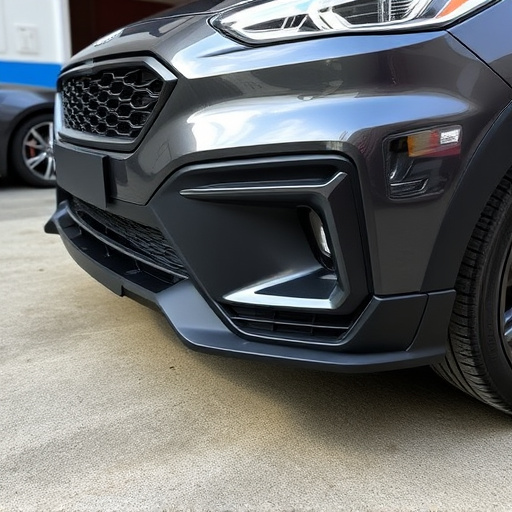
After performing a Tesla seatbelt pretensioner reset according to OEM procedures, it’s crucial to conduct thorough safety checks. This includes verifying that all seatbelt mechanisms are functioning correctly and securely. Upon reset, test each seatbelt’s extension and retraction smoothly and evenly, ensuring no jerks or glitches. Additionally, inspect for any visible damage or wear on the pretensioner itself, as well as the associated hardware and sensors.
Considerations extend to evaluating the overall condition of the vehicle’s safety systems, particularly if the reset was necessitated by a previous collision or accident. Auto repair services specializing in Tesla vehicles can help navigate these checks, especially when dealing with complex systems like seatbelt pretensioners. Remember that proper functioning is paramount for passenger safety, and any issues discovered during these post-reset checks should be addressed promptly through collision damage repair to restore the car’s safety features to their optimal state.
Performing a Tesla seatbelt pretensioner reset according to original equipment manufacturer (OEM) procedures is essential for maintaining optimal safety standards. By carefully following these steps, you can ensure that the system functions correctly and effectively protects passengers in case of an accident. Remember, proper maintenance and timely resets are key to keeping your Tesla’s safety features at their best.

